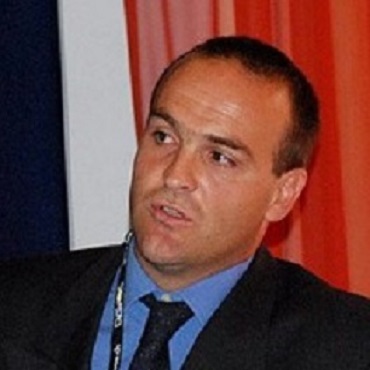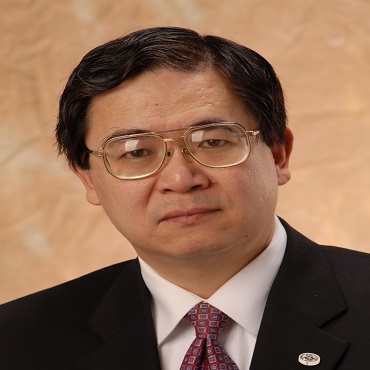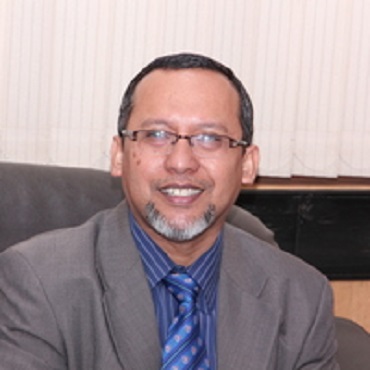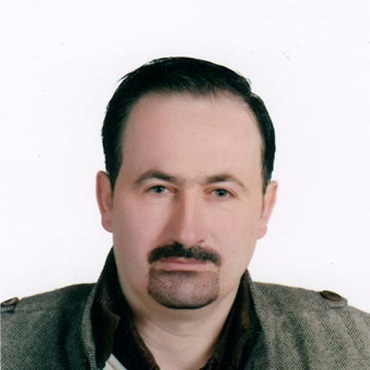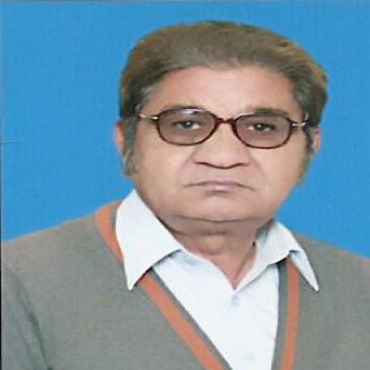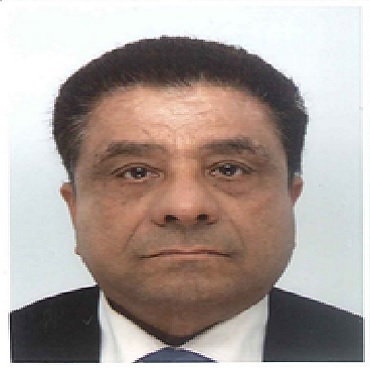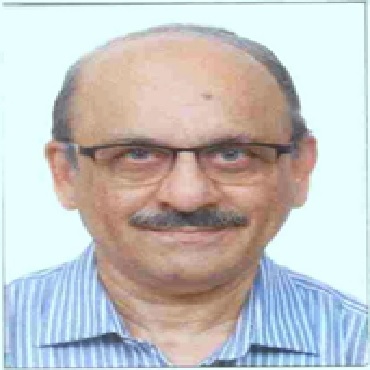
Recycling 2022
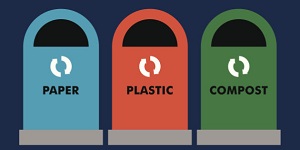
Theme: Recycle More, Waste Less: A Pledge to Make a Difference
We are delighted to invite all the participants globally to attend 2nd Global Summit on Recycling and Waste Management to be held on July 22-23, 2019 in Tokyo, Japan. Recycling Congress 2019 gathers all the global leaders in recycling and relevant fields to share their research at this exclusive scientific program. Recycling congress is aimed to identify advances in recycling which broadly covers solid waste management, reduce, reuse and recycle, bio-Plastics and its recycling process, waste water treatments, e-wastes recycling and managements, waste treatment technologies, thermal waste recovery, paper recycling, food waste recycling, agricultural waste recycling, rubber recycling, construction waste management, waste to energy etc. Recycling Congress is expecting members from around the world and the two day conference will incite plenary sessions, keynote speakers, poster and oral presentations. This congress gives two days of vigorous discussions on recent advancements, new strategies and new techniques for development of new materials for global requirements.
Importance
Recycling is an important aspect in our day to day life, to sustain ourselves and the future generation on this planet. It is beneficial to our environment, since we are making new products from the old products which are no more useful to us. Recycling is good for our environment, in the sense; we are using old and waste products which are of no use and then converting them back to same new products. When we recycle, used materials are converted into new products by reducing the need to consume natural resources. If materials are not recycled then the production of new products is achieved by extracting fresh, raw material from the earth and through mining and forestry. Recycling helps conserve important raw materials and protects natural habitats for the future. Using recycled materials in the manufacturing process employs considerably less energy than that required for producing new products from raw materials, even when comparing all associated costs including transportation etc. Also, there are extra energy savings because more energy is required for extraction, refinery, transportation and processing of raw materials ready for industry compared with providing industry-ready materials. Recycling reduces the need for extracting (mining, quarrying and logging), refining and processing of raw materials, which create substantial air and water pollution. As recycling saves energy and reduces greenhouse gas emissions, which helps in climate change. Current UK recycling is estimated to save more than 17.5 million tonnes of CO2 a year – the equivalent to taking 4.5 million cars off the road. When we recycle, recyclable materials are reprocessed into new products, and as a result the amount of rubbish sent to landfill sites reduces. There are over 1500 landfill sites in the UK, and in 2001, these sites produced a quarter of the UK’s emissions of methane, a powerful greenhouse gas.
Target Audience
• Industries Working on Recycling
• Professors, Asst. Professors, Research Scholars Working on Recycling and Waste management
• Recycling Associations
• Entrepreneurs on Recycling
• Metal and Chemical Engineers
• Environmental Engineers
• Ecologists
• Institutes Training on Green Energy
• Emerging Techies on Recycling
Global Universities and Institutes
America Region
• Arizona State University, USA
• Cal Poly Pomona College of Environmental Design, USA
• UC Davis College of Agricultural and Environmental Sciences, USA
• Technological Institute and of Superior Studies of Monterrey, Mexico
• Colorado Mesa University, USA
• National Autonomous University of Mexico, Mexico
• Pontifical Catholic University of Argentina, Argentina
• Vinyl Institute of Canada, Canada
• Outdoor Power Equipment Institute of Canada, Canada
• University of Brazil, Brazil
Europe Region
• Glasgow Caledonian University School of Engineering and Built Environment, UK
• University of Edinburgh School of Geosciences, UK
• Cranfield University Environment and Agri-food, UK
• University of Ghent Faculty of Bioscience Engineering, Belgium
• Radboud University Masters Programmes, Netherlands
• Wageningen University & Research Life Sciences, Netherlands
• University of Genoa Masters Programs, Italy
• Vrije Universiteit Brussel Faculty of Engineering, Belgium
• University College, Dublin College of Engineering and Architecture, Ireland
• Graz University of Technology Masters Programmes, Austria
Asia Region
• Xian Jiao tong-Liverpool University, Department of Civil Engineering, China
• Hong Kong University of Science and Technology School of Engineering, Hong Kong
• Department of Urban Engineering, The University of Tokyo, Japan
• Department of Products Engineering and Environmental Management, NIPPON institute of technology, Japan
• Tokyo University of Science, Japan
• Kyoto University, Japan
• International Institute of Waste Management, India
Middle-East Region
• King Abdulaziz University, Saudi Arabia
• King Abdullah University of Science and Technology, Saudi Arabia
• Tel-Aviv University, Israel
• Birzeit University, Israel
• Cyprus International University, Turkey
• Ahvaz Jondishapour University of Medical Sciences, Iran
Session 1: Solid Waste Management
Solid waste refers to all non-liquid wastes. In general, this doesn’t include excreta, although sometimes nappies and the faeces of young children may be mixed with solid waste. Solid waste can create significant health problems and a very unpleasant living environment, if not disposed safely or appropriately. If not correctly disposed of, waste may provide breeding-sites for insect vectors, pests, snakes and rats that increase the like hood of disease transmission. It may also pollute water sources and the environment. Take in a portion of the fundamental techniques utilized as a part of overseeing waste items today by going along with us at Recycling 2019.
Session 2: Reduce, Reuse and Recycle
If you have heard something called the waste hierarchy you may be wondering what it means. It is the order of priority of actions to be taken to reduce the amount of waste generated, and to improve overall recycle & waste management processes. The waste hierarchy consists of 3 Rs as follows:
• Reduce
• Reuse
• Recycle
Called the 3 Rs of waste management, this waste hierarchy is the guidance suggested to create a sustainable life. You might be wondering how one can incorporate these principles in day to day life. They are not so hard to implement. All you need is to bring a small change in your daily lifestyle to reduce waste so that less amount of it goes to the landfill, which in return can reduce your carbon footprint. To discover and explore into the recent researches and on-going projects in different region, join your peers at Waste Management 2019.
Session 3: Plastics and Rubber Recycling
Bioplastic recycling closes the loop by creating the materials needed to transform linear supply chains into circular supply chains. Using ground-breaking technology, we sort and upcycle discarded bioplastics into new products that lessen our reliance on the traditional plastics. Our upcycled materials are compatible with standard plastic manufacturing equipment, allowing for rapid market adoption. The concept of sustainability has been garnering much-needed public attention and interest in recent few years. The increase of wastes has serious environmental implications, and waste management must be carefully considered. There is now a focus on sustainable practices in almost any industry—including the rubber and plastic industries. The rubber and plastic industries have been faced with its own unique challenges when it comes to recycling. Synthetic rubber is difficult to manage due to three main factors:
• Large volume of waste
• Durability of the material
• Hazards involving handling and storage
Join your companions at Recycling of Waste 2019 to interface and offer thoughts on the routes for reusing the plastics and rubbers and to know the advantages associated with it.
Session 4: Waste Water Treatments
Wastewater treatment, also known as sewage treatment, is the removal of impurities from wastewater, or sewage, before they reach aquifers or natural bodies of water such as rivers, lakes, estuaries, and oceans. Since pure water is not found in nature, any distinction between clean water and polluted water depends on the type and concentration of impurities found in the water as well as on its intended use. In broad terms, water is said to be polluted when it contains enough impurities to make it unfit for a use, such as drinking, swimming, or fishing. Although water quality is affected by natural conditions, the word pollution usually implies human activity as the source of contamination. Water pollution, therefore, is caused primarily by the drainage of contaminated wastewater into surface water or groundwater, and wastewater treatment is a major element of water pollution and it's control. Go along with us to extend your insight on this session at Waste Disposal and Recycling 2019.
Session 5: E-Wastes Recycling and Management
The electrical and electronic devices, dead cells and batteries we throw away with other garbage contain lead that easily mixes with underground water, making it unfit for direct consumption. That is just the tip of the iceberg – the major problem of e-waste disposal! This word has caught up in the recent past only when someone studying the subject noted that our environment will be 3x more congested with e-waste by the end of 2017. I did not save that tweet else I could have given you some reference. Even if it is not to be tripled, e-waste is growing in huge volumes. The reason why e-wastes are increasing, is that technology is growing fast and, in an attempt, to get better devices, we casually get rid of old electronics – the best examples being that of smartphones. Utilize this Recycling 2019 as the logical stage to find out about the powerful method for e-waste administration and for recycling it in a proficient way.
Session 6: Waste Treatment Technologies
There exist a number of different waste treatment technologies used for the disposal, recycling, storage, or energy recovery from different waste types. Each type has its own associated methods of recycling & waste management. Municipal solid waste consists mainly of household things and commercial waste which is disposed of by or on behalf of a local authority. Landfills waste are categorized by either being hazardous, non-hazardous or inert wastes. Incineration are reduction of volume and mass by burning, reduction to a percentage of sterile ash, source of energy, increase of income by selling bottom ash, and it is also environmentally acceptable. The human sewage and the process waste from the manufacturing industries are the two main sources of the waste water. In Thailand, the total volume of the wastewater from industries is much greater than that of the domestic sewage. As a result, an effective method is needed. Microbial remediation of xenobiotics has shown to be effective and the low-cost technology, but it has several limitations. Consequently, the genetic engineering approaches are used to create the new strain of microbes (Genetically engineered microorganisms, GEMS) which have better catabolic potential than wild type species for bioremediation. Give us a chance to meet and trade the information over the reusing of waste and the most recent on-going ventures in this field at this Waste Management 2019.
Session 7: Thermal Waste Recovery
Residuals and wastes often exhibit high calorific values. It pays to make use of this energy for both, municipalities and industries. The energy chemically bound in these wastes is first released by combustion, then dissolved from exhaust gasses and finally fed into recovery boilers. Here, it transferred to thermal unit heat carriers so that it can be used for power generation, e.g., in a steam power plant. Let’s together meet on Reduce Recycle Reuse 2019 and make a discussion on thermal waste recovery process.
Session 8: Paper Recycling
Paper is required and used for anything and everything one can think of it. With hundreds of final uses paper satisfies many important human needs. In fact, it is an integral part of our regular life. The technological advance with computers and photocopiers has increased the consumption and waste of paper. Indian consumption of paper is five kilograms per capita, with an expected growth rate of 6-8% per annum over the next five years. By using paper carelessly, we contribute to the depleting forest cover, irregular climate change and water pollution. For every ton of paper, the paper industry guzzles up nearly 3 tons of dry timber and 24,000 gallons of water, besides electricity and other resources. Pulp and paper industry are a major contributor in terms of air and water pollution. Recycling of paper not only saves tree and minimizes pollution, but also reduces the waste problem by utilizing waste materials like used paper, cotton rags and unwanted biomass. In this session, we can pick up general information on how the paper waste are treated before disposing at Recycling 2019.
Session 9: Food and Agricultural Waste Recycling
The best thing that can happen to food is that it makes to our plates and we enjoyed. Avoiding and throwing out food that could have been eaten will save our money, also it helps to reduce greenhouse gas emissions. However, some food wastes are inevitable - egg shells, banana skins and tea bags are never going to be on the menu. Home composting is a great way to stop this sort of waste ending up in landfill, and our gardens will really thankful to us for this thing. If you live in an area that has a local food waste recycling collection service, you can use this to dispose of anything you can't eat, or compost these things at home. It can be recycled into a good quality soil improver or fertiliser and even generate electricity that can be fed back into the national grid services. Agricultural waste recycling is a growing business in recent days, as more and more farms and companies turn to alternate ways to process waste products instead of sending them to landfill. With green waste becoming increasingly recycled in homes around the world, agriculture is also turning to recycling methods in order to reduce the amount of waste it has to pay to get rid of. The wastes produced from farms and other rural businesses often varies, and initially not so easy to recycle. The temptation to just bag it up and pay for it to be collected is an understandable one, but that won't save any money.We can check whether our local authority offer a food waste collection service on our recycling locator. Join your companions at Waste management 2019 to take in more about Food waste recycling.
Session 10: Metal Recycling
Metals are most valuable materials that can be recycled again and again without degrading their properties. Scrap metal has value, which motivates people to collect it for sale to recycling activities. In addition to a financial incentive, there is also an environmental imperative. The recycling of metals enables us to preserve natural resources while requiring less energy to process than the manufacture of new products using virgin raw materials and minerals. Recycling emits very less carbon dioxide and other harmful gasses. More importantly, it is cost effective and allows manufacturing businesses. Metal Recycling sector creates job opportunities for young talents. Join with our Recycling Congress 2019 for vast discussion on metal recycling.
Session 11: Landfilling
The purpose of land-filling is to bury the trash in such a way that it will be isolated from the level of groundwater. It will be kept dry and will not be in contact with our environment. Under these conditions, trash will not decompose much. A landfill is not like a compost pile, where the purpose is to bury trash in such a way that it will start decompose quickly. A sanitary landfill uses a clay liner to isolate the trash from our environment. A municipal solid waste (MSW) landfill uses a synthetic (plastic) liner to isolate the trashes from the environment. Utilize this Recycling 2019 as the logical stage to find out about the powerful method for land-filling in a proficient way.
Session 12: Waste to Energy
Waste to Energy (WTE) is commonly used in some specific reference to incineration which burns completely combusted waste at ultra-high temperatures allowing for energy recovery. Now in modern incineration facilities use pollution control equipment to prevent the release of emissions into the environment. Currently incineration is the only WTE technology that is economically viable and operationally feasible at commercial scale. Join your companions to find out about the propelled systems use to change over the distinctive sorts of waste into energy at Reduce Reuse Recycle 2019.
America Region
Euro-monitor International's Industrial reports provide a 360-degree view of an industry. This Industrial market report offers a comprehensive guide to the size and shape of the Utilities and Recycling market at a national level. It provides the latest retail sales data, allowing us to identify the sectors driving growth. It identifies the leading companies, the leading brands and offers strategic analysis of key factors influencing the market - be they knew product developments, packaging innovations, economic/lifestyle influences, distribution or pricing issues. Forecasts illustrate how the market is set to change.
This report’s scope spans the North American market for lithium battery recycling. Analysis of report in regional market trends, using data from 2016 and 2017 as base years and providing estimates for 2018 to 2023 with projections of compound annual growth rates in the forecast period. This report includes detailed discussion of technological and economic trends that are affecting the market. Furthermore, it explains the major drivers and regional dynamics of the lithium battery recycling market and the current trends within the industry.
Sale values within the report are presented in U.S. dollars, while the sales values in terms of actual product are presented in thousand units. Choice of using thousands as a denomination unit was dictated by the shipment volumes for specific categories, which would have otherwise appeared too insignificant. It is important to note that the lifespan of the lithium batteries varies depending upon the usage industry.
CFRP (Carbon fibre reinforced plastics/polymer) are ideal lightweight structural materials for aerospace, automotive, energy and sports industries. CFRP Recycle is recycling CFRP from end-of-life parts and waste generated in the production process, such as scrap materials, out-of-date pre-reg.
Europe Region
Plimsoll Publishing's Aggregate Recycling Analysis provides a detailed overview of the UK Aggregate Recycling, market and delivers a comprehensive individual analysis on the top 150 companies, including Erith Contractors Ltd, Squibb Group Ltd and Coleman & Company Ltd. This report covers activities such as demolition, recycling, skip hire, waste management, construction and includes a wealth of information on the financial trends over the past four years.
Plimsoll Publishing's IT Recycling (UK) Analysis provides a detailed overview of the UK IT Recycling market and delivers a comprehensive individual analysis on the top 280 companies, including A Novo UK Ltd, M.D.J. Light Brothers (Scrap Processers) Ltd and Tier 1 Asset Management Ltd. This report covers activities such as recycling, computer recycling, it is recycling, computer disposal and includes a wealth of information on the financial trends over the past four years.
Plimsoll Publishing's Oil Recycling (UK) Analysis provides a detailed overview of the UK Oil Recycling market and delivers a comprehensive individual analysis on the top 50 companies, including Augean Plc, Oil Salvage Ltd and Living Fuels Ltd. This report covers activities such as hazardous waste collection, waste oil collection, clean fuel oil, fuel oil sales, parts washers and includes a wealth of information on the financial trends over the past four years.
Asia Region
Firms in industries sort and conduct secondary recovery of non-metal waste and recycled fragments from various other types of solid waste. Enterprises turn waste into usable raw materials and prepare waste for further processing. Producing new products using solid waste is not included in this industry. Report covers the scope, size, disposition and growth of the industry including the key sensitivities and success factors. Also included are five-year industry forecasts, growth rates and an analysis of the industry key players and their market shares.
Report profiles India’s paper and paper products industry, discussing market trends and outlook through 2014 and beyond. This report also highlights leading players in the sector including Ballarpur Industries Ltd, Tamil Nadu Newsprint and Paper Ltd and Rainbow Papers Ltd. The paper industry in India has been in existence since ancient times, experiencing a paradigm change over the years. Existing paper mills in the country employ diverse technologies- from legacy to advanced methods. Indian paper mills mainly use three types of raw material namely wood/chemical pulp, agro residues and recycled fibre to produce paper and paper products.
Over the last decade owning electronics has become increasingly linked with the quality of life. As a result, sales and production of electronics have soared worldwide. Advances in technology have brought about a wide variety of products and newer versions each product are being launched constantly. This has resulted in an increase in the rate at which electronics are being discarded, and volumes of waste have increased manifold. This rise in the quantity of e-waste is a global phenomenon and has given rise to concerns about human and environmental exposure to this type of waste. This has paved the way for the growth of e-waste management services.
Middle East Region
MISC – Sohar Central Effluent Treatment and Recycle Plant Phase II – Oman Project Profile contains information on the scope of the project including project overview and location. This profile also details project ownership and funding, gives a full project description, as well as information on contracts, tendering and key project contacts. The MISC – Sohar Central Effluent Treatment and Recycle Plant Phase II – Oman Project Profile is part of Timetric's database of 82,000+ construction projects. Our database includes a 10+ year archive of completed projects, full coverage of all global projects with a value greater than $25 million and key contact details for project managers, owners, consultants, contractors and bidders.
VEOEY/OGE – Jubail Waste Recycling Plant – Saudi Arabia - Project Profile contains information on the scope of the project including project overview and location. The profile also details project ownership and funding, gives a full project description, as well as information on contracts, tendering and key project contacts. The VEOEY/OGE – Jubail Waste Recycling Plant – Saudi Arabia - Project Profile is part of Timetric's database of 82,000+ construction projects. Our database includes a 10+ year archive of completed projects, full coverage of all global projects with a value greater than $25 million and key contact details for project managers, owners, consultants, contractors and bidders.
Recycling Industries across the World
• SIMS Recycling, India
• DS Smith Paper Recycling Industry, Belgium
• Eutectic Corporation, USA
• Recycling International, Netherlands
• Sonoco Recycling, USA
• Cumberland Recycling, USA
• VITA Recycles, China
• Alcoa Recycling, USA
• SESMAN Recycling, Mexico
• Summit Recycling, UK
Recycling and Waste Management Associations across the World
• Air & Waste Management Association, USA
• Alabama Recycling Association, USA
• American Bureau of Metal Statistics, USA
• American Chemical Society, Rubber Division, USA
• American Forest and Paper Association, USA
• The Recycling Association, UK
• Textile Recycle Association, UK
• Waste Management and Recycling Association of Singapore, Singapore
• International Solid Waste Association, Austria
• Metal Recycling Association of India, India
• Ship Recycling Industries Association, India
• The Japan Containers and Packaging Recycling Association, Japan
• Japan Organics Recycling Association, Japan
- Solid Waste Management
- Reduce Reuse and Recycle
- Plastics and Rubber Recycling
- Waste Water Treatments
- E-Wastes Recycling and Management
- Waste Treatment Technologies
- Thermal Waste Recovery
- Paper Recycling
- Food and Agricultural Waste Recycling
- Metal Recycling
- Landfilling
- Waste to Energy
- Expert Opinion on Environmental Biology
- Journal of Material Sciences & Engineering
8 Organizing Committee Members
8 Renowned Speakers
Brian Sulaiman
CEO, Dena Technology
UK
Sakhob Khumoka
Assistant Professor, SUT
Thailand
Neha Sharma
Associate Professor, Poddar International College
India
Jayant Khadilkar
CEO, Jay Elastomers Pt. Ltd.
India
Natthicha Ma-ud
Master Student, SUT
Thailand
Renu Hujare
Asst. Professor, GIT
India
Khadem Mahmud Yusuf
CEO, BPCL
Bangladesh
Rafenomananjara Nirina
Research Scholar, University of Miyajaki
Japan


